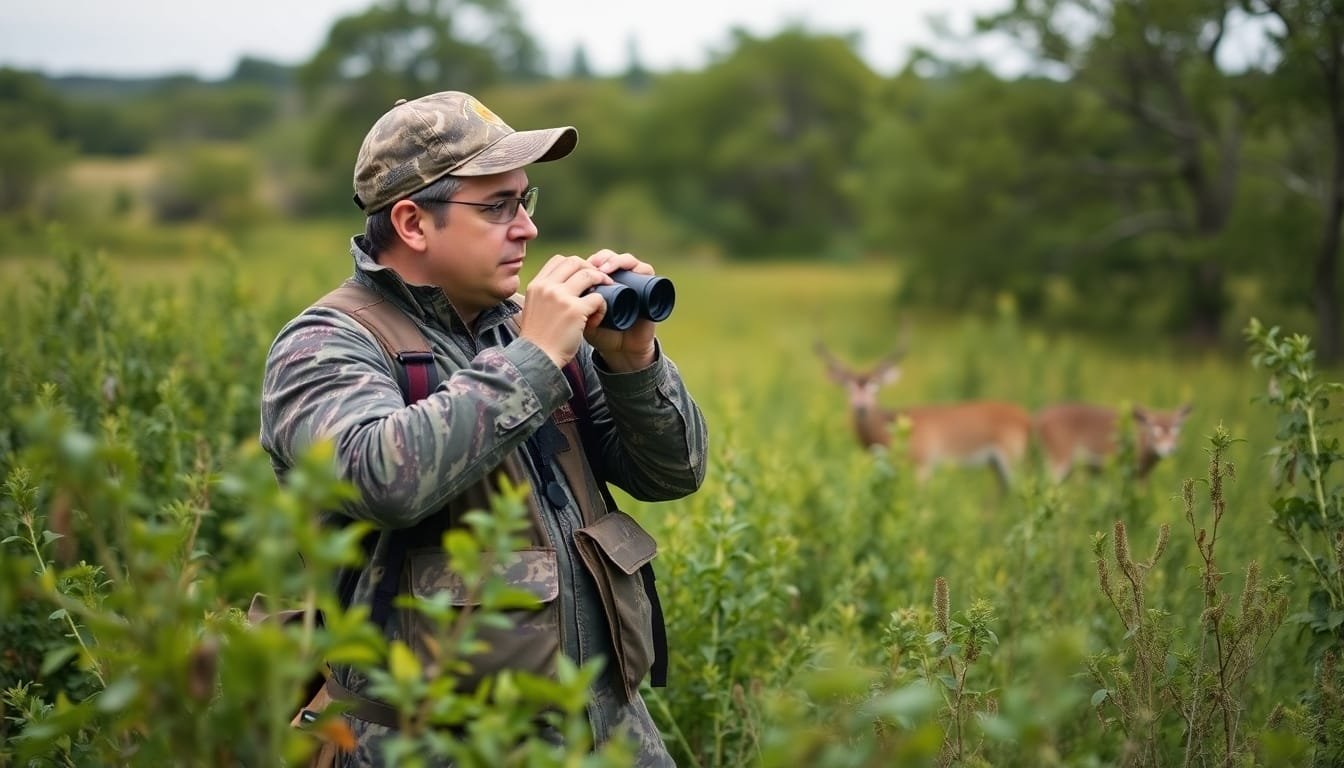Hunting small game and birds can be a thrilling experience, filled with opportunities to connect with nature and hone your skills.
Whether you’re a beginner or seasoned hunter, understanding the basics of scouting and hunting techniques is essential for a successful outing.
This guide will introduce you to important tips and strategies that can improve your hunting experience.
Key Takeaways about Scouting for Small Game and Birds
- Preparation is key; always choose the right gear and understand local hunting laws.
- Learn about the behavior of small game and birds to improve your chances of success.
- Effective scouting techniques help you locate game and understand their habits.
- Concealment is crucial; use the right clothing and techniques to stay hidden from your prey.
- Always practice ethical hunting by respecting wildlife and the environment.
Essential Preparation for Scouting Small Game and Birds
When it comes to hunting small game and birds, preparation is key.
We need to get our gear sorted, understand the rules, and be ready for whatever Mother Nature throws at us.
Here’s how we can set ourselves up for success:
Choosing the Right Gear
- Firearm or Bow: Depending on what we’re hunting, we should choose the right weapon. Shotguns work great for birds, while rifles are better for small mammals.
- Clothing: We need to wear clothes that blend in with our surroundings. Camouflage is our friend!
- Other Essentials: Don’t forget things like binoculars, a good knife, and a first-aid kit.
Understanding Game Regulations
Before we head out, it’s super important to know the local hunting laws. This includes:
- Bag limits: Knowing how many animals we can take home helps keep populations healthy.
- Seasons: Different animals have different hunting seasons, so we need to check the calendar.
- Permits: Make sure we have the right licenses to avoid any trouble.
Preparing for Weather Conditions
Weather can change quickly, so we should be ready for anything:
- Check the forecast: Knowing if it’s going to rain or be sunny helps us dress appropriately.
- Layering: Dressing in layers keeps us comfortable, whether it’s hot or cold.
- Stay dry: Waterproof gear can make a big difference if we get caught in the rain.
Remember, good scouting can make or break our hunt. Let’s take the time to prepare properly and enjoy the experience!
Understanding the Behavior of Small Game and Birds
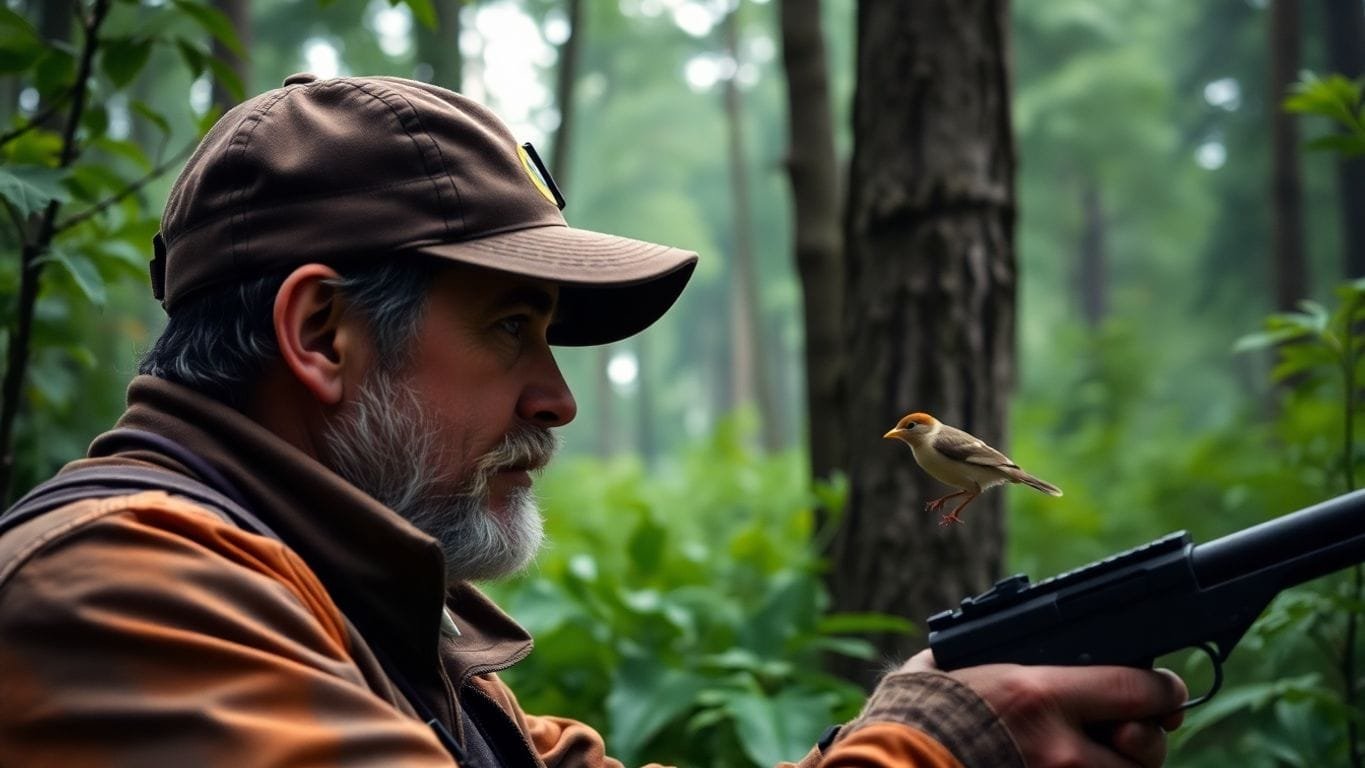
When we’re out there hunting, understanding the behavior of small game and birds is key to our success.
Knowing their habits can make all the difference.
Let’s break it down into a few important areas:
Species Identification
- Recognizing different species is crucial. For instance, pheasants can fly upwards of 40 mph, so knowing what we’re after helps us plan better.
- Familiarize ourselves with their appearance, habitats, and behaviors. This knowledge will guide us in the field.
- Keep an eye out for common small game like rabbits, squirrels, and various upland birds.
Daily and Seasonal Habits
- Understanding when these animals are most active can help us time our hunts effectively. For example, many small game species are more active during dawn and dusk.
- Seasonal changes also affect their behavior. In winter, they might seek shelter more often, while in spring, they could be nesting.
- We should always be aware of their feeding times and patterns to increase our chances of a successful hunt.
Tracking and Signs
- Learning to read tracks and signs is essential. Look for footprints, droppings, and other signs of activity.
- This can help us determine where the game is likely to be. For example, if we spot fresh tracks, we know we’re in the right area.
- Using technology like apps can also assist us in tracking and identifying species.
Understanding the behavior of small game and birds not only enhances our hunting skills but also deepens our connection with nature.
By mastering these aspects, we can improve our chances of a successful hunt and enjoy the experience even more!
Effective Scouting Techniques
When it comes to scouting for small game and birds, we need to be smart and strategic.
Effective scouting can make or break our hunt.
Here are some techniques that have worked for us:
Identifying Habitats
- Look for areas with dense cover, like thickets or brush piles.
- Check out fields with tall grass or wildflowers; these are often hotspots for small game.
- Don’t forget about water sources; animals need water just like we do.
Locating Food and Water Sources
- Search for signs of food, such as tracks or droppings. This can tell us what animals are nearby.
- Early morning and late afternoon scouting trips can provide crucial insights. Use binoculars or a spotting scope to observe from a distance without disturbing the area.
- Remember, food sources can change with the seasons, so keep an eye on what’s available.
Recognizing Game Trails
- Look for well-worn paths in the grass or dirt; these are often used by animals.
- Pay attention to the direction of the trails; this can help us predict where the game is headed.
- Mark these trails on a map for future reference.
Scouting isn’t just about finding the game; it’s about understanding their world. The more we know, the better our chances of success!
Mastering the Art of Concealment
When it comes to hunting small game and birds, staying hidden is key.
We all know that these critters have sharp senses, so blending into our surroundings is crucial.
Here are some tips to help us master the art of concealment:
Choosing Camouflage Clothing
- Pick the right patterns: Choose clothing that matches the environment we’ll be hunting in, whether it’s forest, field, or marsh.
- Layer up: Weather can change quickly, so layering helps us stay comfortable and quiet.
- Avoid shiny materials: Make sure our gear doesn’t reflect light, which can give us away.
Using Blinds Effectively
- Set up early: We should arrive at our spot well before the hunt to set up our blinds.
- Blend in: Use natural materials like branches and leaves to cover our blinds, making them less noticeable.
- Stay still: Once we’re in the blind, movement can alert nearby game, so we need to stay as still as possible.
Minimizing Your Presence
- Move quietly: Small game animals are easily startled, so we should practice moving silently through the terrain.
- Scout the area: Knowing the lay of the land helps us find the best spots to hide and increases our chances of success.
- Use the wind: Always be aware of the wind direction; it can carry our scent to the game, so we should position ourselves accordingly.
By mastering these concealment techniques, we can significantly improve our chances of a successful hunt. Remember, the less we stand out, the better our odds!
In summary, whether it’s choosing the right gear, setting up blinds, or minimizing our presence, every little detail counts.
Let’s get out there and put these tips into practice!
Techniques for Successful Small Game Hunts
When it comes to small game hunting, we’ve got to be smart and strategic. Here are some techniques that can really up our game:
Still Hunting
This method is all about moving slowly and quietly. We take our time, pausing often to look for any signs of movement. It’s super effective in thick cover where animals like to hide.
Spot-and-Stalk
In this technique, we first spot our target from a distance. Then, we carefully make our way closer without being seen. Using binoculars can help us plan our approach. It’s like a game of hide and seek, but we’re the ones seeking!
Hunting with Dogs
Having a well-trained dog can make a huge difference. They can help flush out birds and track down any wounded game. Plus, it’s just more fun to have a furry friend along for the adventure!
Remember, the key to successful small game hunting is patience and practice. The more we learn about our surroundings and the animals we’re hunting, the better our chances of success.
By mastering these techniques, we can enjoy our time outdoors while also increasing our chances of a successful hunt. Let’s gear up and get out there!
Ethical Hunting Practices
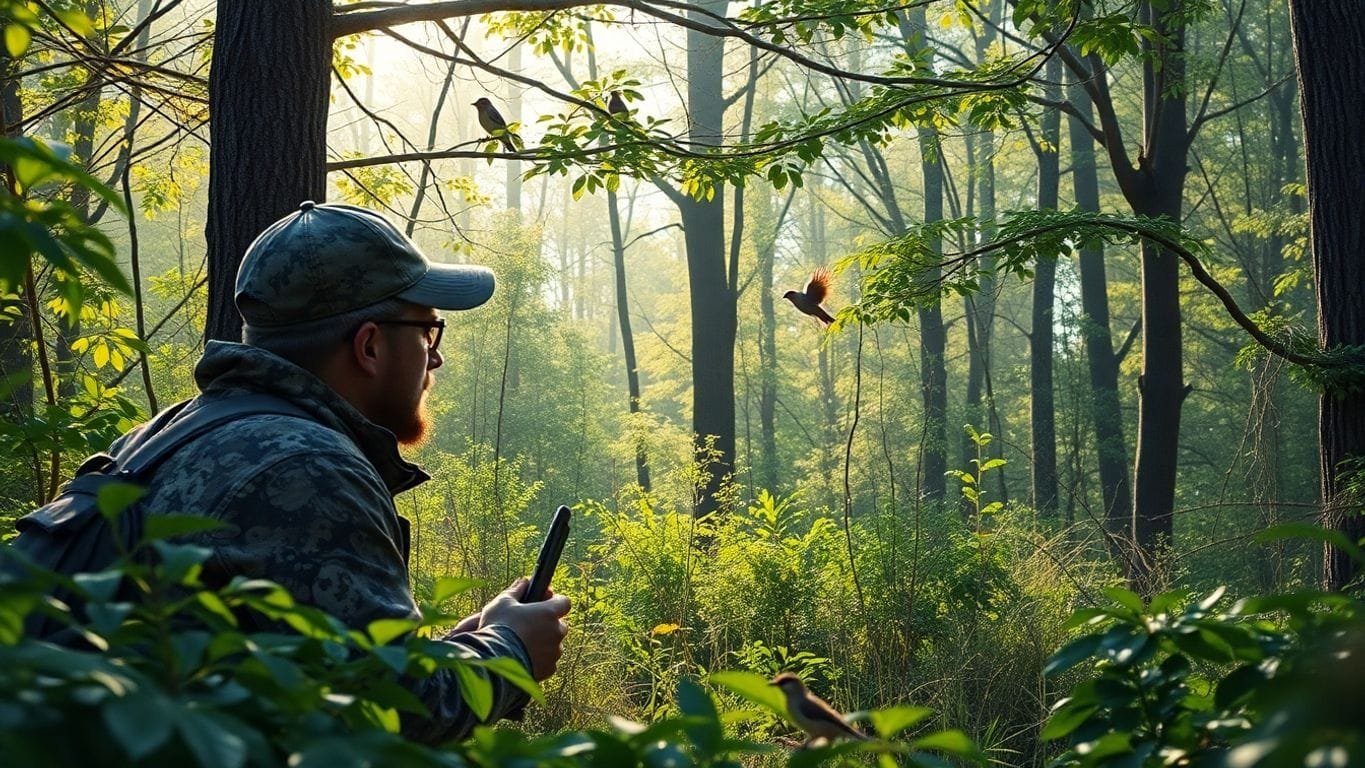
When we think about hunting, it’s not just about the thrill of the chase; it’s also about being responsible and respectful.
Ethical hunting means understanding and respecting the game we pursue.
Here are some key points to keep in mind:
Understanding Bag Limits
- Bag limits help maintain healthy wildlife populations.
- They ensure that we don’t overhunt any species.
- Always check local regulations to know the limits for each type of game.
Ensuring Clean Kills
- A clean kill minimizes suffering for the animal.
- It’s our responsibility to make sure we’re skilled enough to take accurate shots.
- Practice regularly to improve your aim and confidence.
Respecting the Environment
- Leave no trace: take all your trash with you.
- Avoid damaging habitats while hunting.
- Remember, we’re guests in nature, and it’s our job to protect it.
Ethical hunting is about more than just following the rules; it’s about being a good steward of the land and wildlife.
By following these practices, we can enjoy our hunts while ensuring that future generations can do the same.
Let’s make sure we’re doing our part to keep hunting sustainable and enjoyable for everyone!
Field Dressing and Processing Your Harvest
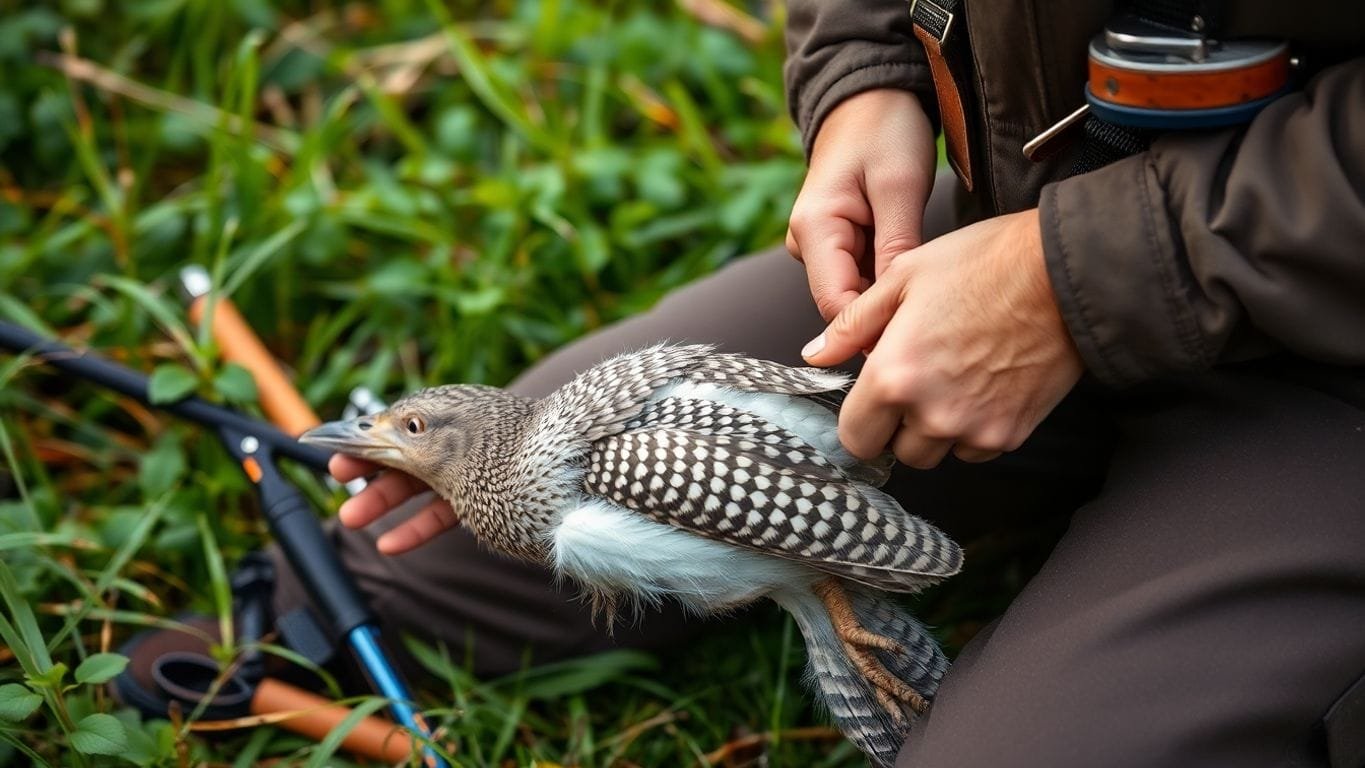
After a successful hunt, the real work begins! Field dressing is crucial for preserving the quality of the meat. Here’s how we can tackle this important task together:
Field Dressing Techniques
- Wear gloves: Always put on nitrile, rubber, or latex gloves to avoid contact with any bacteria or parasites. This keeps us safe while handling the game.
- Make the initial cut: Start by making a shallow cut along the belly, being careful not to puncture any organs.
- Remove the entrails: Gently pull out the organs, ensuring we don’t spill any contents that could spoil the meat.
Butchering Tips
Once we’ve dressed the game, it’s time to butcher it. Here are some handy tips:
- Use a sharp knife: A good knife makes the process smoother and safer.
- Break it down: Cut the meat into manageable pieces for cooking or freezing.
- Label your cuts: If you’re freezing, label each package with the date and type of meat.
Cooking Wild Game
Now for the fun part—cooking! Here are some delicious ideas:
- Rabbit stew: A hearty dish perfect for chilly nights.
- Squirrel pot pie: A comforting classic that’s sure to please.
- Roasted pheasant: A gourmet option that’s surprisingly easy to prepare.
Remember, the way we handle our harvest reflects our respect for the game and the environment. Let’s make every step count!
Tips for New Hunters
Starting out in small game hunting can feel a bit daunting, but we’re here to help! Here are some practical tips to get you on the right track:
Selecting Your First Hunt
- Pick the right species: Choose small game like rabbits or squirrels for your first hunt. They’re more forgiving for beginners.
- Find a good location: Look for areas with plenty of cover and food sources. This will increase your chances of spotting game.
- Join a group: Hunting with experienced friends can make your first hunt more enjoyable and educational.
Safety Practices
- Take a hunter safety course: This is crucial for understanding firearm safety and hunting ethics.
- Always wear orange: It keeps you visible to other hunters and helps prevent accidents.
- Know your gear: Familiarize yourself with your firearm or bow before heading out.
Building Confidence
- Practice makes perfect: Spend time at the range to get comfortable with your shooting skills.
- Learn from mistakes: Every hunter has had their share of mishaps. Use them as learning experiences.
- Stay patient: Hunting takes time. Don’t get discouraged if you don’t get a shot right away.
Remember, the journey is just as important as the destination. Enjoy the process of learning and connecting with nature!
With these tips, we can all feel more prepared and excited for our first hunting adventure. Let’s get out there and make some memories!
Utilizing Public and Private Hunting Lands
When it comes to hunting, knowing where to go is half the battle.
Public and private lands offer unique opportunities for us to connect with nature and pursue small game.
Here’s how we can make the most of these options:
Finding Public Hunting Areas
- Check Local Resources: Many states have designated public hunting lands. We can find these areas by checking with local wildlife agencies or their websites.
- Explore Different Types: From forests to wetlands, public lands can vary greatly. Each type offers different hunting experiences and game species.
- Stay Updated: Regulations can change, so it’s important to stay informed about any updates or restrictions.
Exploring Private Leases
- Consider Private Leases: Some landowners lease their properties for hunting. This can be a great way to hunt with less competition.
- Build Relationships: Getting to know landowners can lead to better opportunities and possibly more access in the future.
- Respect the Land: Always follow the rules set by landowners to maintain good relationships and ensure future hunting opportunities.
Understanding Landowner Agreements
- Read the Fine Print: If we decide to lease land, it’s crucial to understand the terms and conditions.
- Discuss Expectations: Clear communication with landowners about what’s allowed can prevent misunderstandings.
- Be Responsible: Treat the land with respect, and follow all agreements to keep the door open for future hunts.
Utilizing both public and private lands can enhance our hunting experiences. By being informed and respectful, we can enjoy successful hunts while preserving these opportunities for the future.
In summary, whether we’re hunting on public lands or private leases, the key is preparation and respect.
Let’s gear up and get out there!
Advanced Scouting Strategies
When it comes to hunting, we all know that preparation is key.
Using technology can really give us an edge in scouting for small game and birds.
Here are some strategies we can use to enhance our scouting game:
Using Technology for Scouting
- E-Scouting: We can utilize apps like OnX or Google Earth to get a bird’s-eye view of our hunting areas. This helps us spot potential hotspots without even stepping outside.
- Trail Cameras: Setting up cameras can help us monitor animal activity. We can see what’s moving where and when, giving us a better idea of the best times to hunt.
- Weather Apps: Keeping an eye on the weather can help us plan our hunts. Knowing when it’s going to rain or be windy can make a big difference in our success.
Seasonal Scouting Adjustments
- Spring and Summer: During these seasons, we should focus on finding food sources and nesting areas. This is when animals are most active.
- Fall and Winter: As the seasons change, we need to adjust our scouting to look for areas where animals are seeking shelter and food.
- Regular Check-Ins: We should revisit our scouting spots regularly to see how conditions change over time.
Collaborating with Other Hunters
- Sharing Insights: Talking to fellow hunters can provide us with valuable information about local game patterns.
- Group Scouting Trips: Going out with friends can make scouting more fun and effective. We can cover more ground and share our findings.
- Mentorship: Learning from experienced hunters can help us refine our techniques and strategies.
Scouting is not just about finding game; it’s about understanding the land and the animals that inhabit it. The more we know, the better our chances of a successful hunt.
By combining these strategies, we can become more effective in our scouting efforts and ultimately improve our hunting success.
Let’s get out there and make the most of our time in the field!
Adapting to Different Hunting Environments
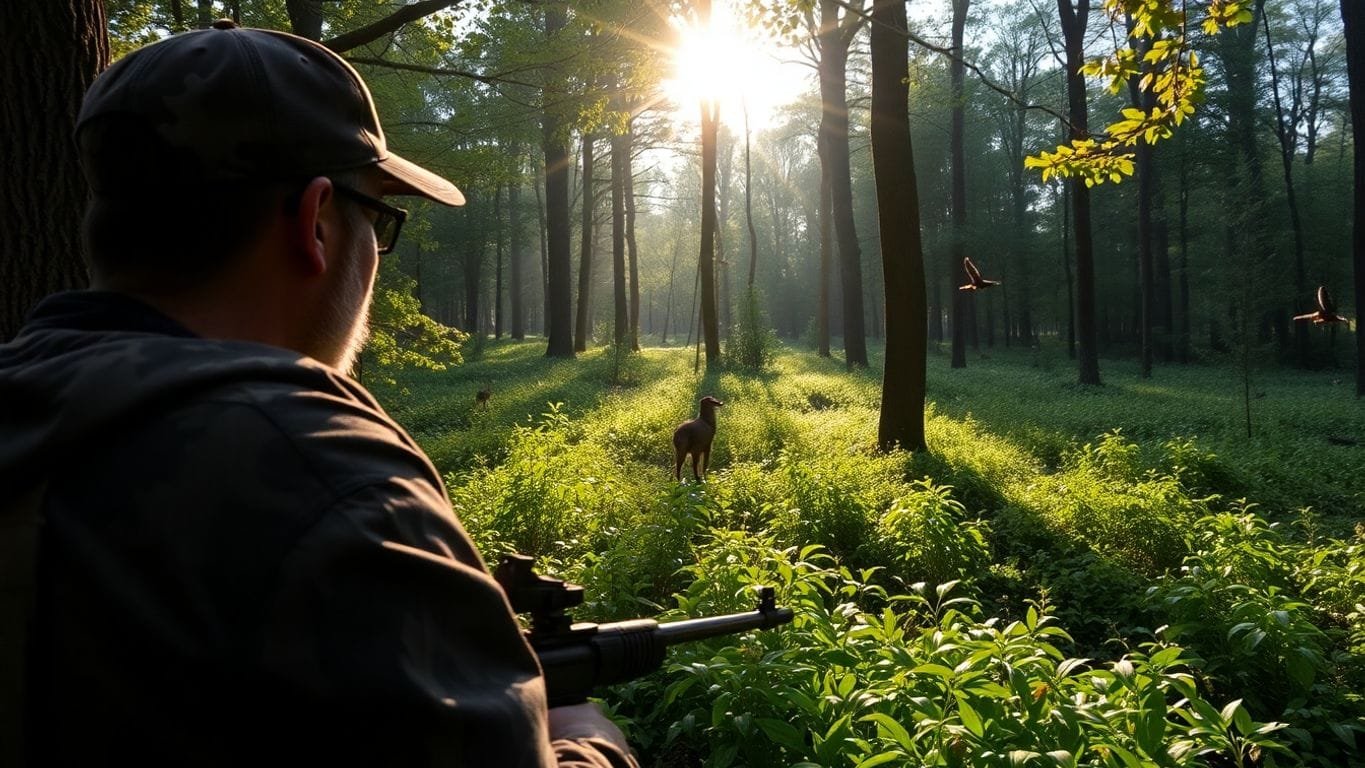
When it comes to hunting, we all know that different environments require different approaches.
Understanding how to adapt can make or break our success in the field.
Here’s how we can tackle various terrains:
Hunting in Forests
- Stay Quiet: The sounds of rustling leaves can easily alert game.
- Use Natural Cover: Blend in with the surroundings to avoid detection.
- Look for Trails: Animals often follow the same paths, so keep an eye out for tracks.
Hunting in Fields and Open Terrain
- Use Binoculars: Spotting game from a distance can save us from unnecessary movement.
- Watch the Wind: Animals can smell us from far away, so position ourselves accordingly.
- Be Patient: Sometimes, just sitting still can yield the best results.
Hunting Near Water Bodies
- Check for Signs: Look for tracks and droppings near water sources.
- Timing is Key: Early mornings and late evenings are often the best times to hunt near water.
- Stay Hidden: Use natural cover like bushes or reeds to stay out of sight.
Adapting our strategies based on the environment is crucial for a successful hunt. Each setting offers unique challenges and opportunities, so let’s embrace them!
By keeping these tips in mind, we can enhance our hunting experience and increase our chances of success.
Remember, every environment has its own rhythm, and learning to move with it is part of the adventure!
Wrapping It Up
Small game hunting is not just about the thrill of the chase; it’s a chance to connect with nature and sharpen your skills.
By following the tips and tricks shared here, you can make your hunting trips more enjoyable and successful. Always remember to hunt responsibly and respect the wildlife and the environment.
Now, grab your gear, head out into the wild, and enjoy some unforgettable small game hunting adventures.
Happy hunting!
Frequently Asked Questions
What gear do I need for small game hunting?
You’ll need a good firearm or bow, appropriate clothing for camouflage, and essential hunting tools like a knife and a first aid kit.
How can I identify different small game species?
Learn to recognize their shapes, colors, and habitats. Field guides or apps can help with identification.
What are the best times to hunt small game?
Early morning and late afternoon are often the best times, as many animals are more active during these hours.
Do I need a hunting license for small game hunting?
Yes, you typically need a hunting license and may require specific permits depending on your location.
How do I effectively scout for small game?
Look for signs like tracks, droppings, and feeding areas. Spend time observing the environment before your hunt.
What is the importance of ethical hunting practices?
Ethical hunting ensures wildlife populations remain healthy and helps preserve natural habitats for future generations.
How should I dress for small game hunting?
Wear layers to adapt to changing weather, and choose camouflage clothing to blend in with your surroundings.
What should I do after I harvest small game?
Field dress the animal as soon as possible to maintain meat quality, then process it for cooking or freezing.

